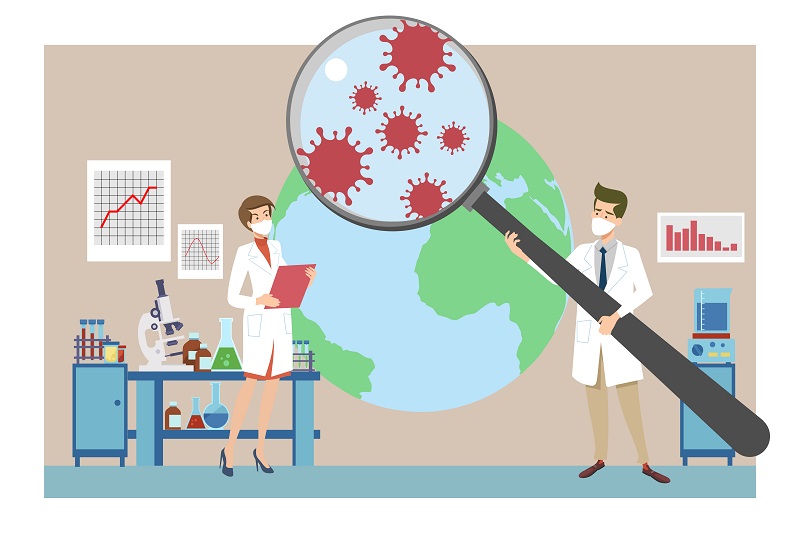In today’s fast-moving, digitally connected world, strange new health terms can pop up and spark concern in an instant. One term that’s recently caught people’s attention is “laturedrianeuro.” But what is it? And more importantly, can laturedrianeuro spread? This question is echoing across online forums, drawing curiosity from health professionals, science watchers, and everyday people alike. This guide dives deep into what we know, what we don’t, and what we should be paying attention to.
Can Laturedrianeuro Spread – What Is It Exactly?
The first step in understanding whether laturedrianeuro can spread is to figure out what it even is. Surprisingly, “laturedrianeuro” is not found in any well-established medical textbooks or major health organization databases. This suggests three possibilities:
- It could be a newly emerging neurological condition still under scientific review.
- It may be a synthetic or AI-generated term meant to mimic real medical language.
- Or, it could be part of an online trend or meme that has taken on a life of its own.
Laturedrianeuro is the unusual disorder of the brain. It alters the functioning of your brain cells and the conversation between the brain cells. It may impact memory, balance, and speaking. The condition is innovative to most physicians and un-researched. Most people mix it up with other conditions such as Alzheimer. However, it is not the case. It also has its own pattern and symptoms. Patients tend to experience some mild symptoms. These may be memory losses or minor balance problems. Symptoms become more pronounced with time and interfere with life. The mystery makes people ask, can laturedrianeuro spread to others easily? The answer is not as simple as it sounds.
Can Laturedrianeuro Spread Like a Disease?

This is the heart of the issue: can laturedrianeuro spread like known infectious diseases? The answer depends heavily on how it’s classified.
Human-to-Human Transmission: If laturedrianeuro is caused by a virus, bacteria, or prion-like protein, direct human transmission could be possible. Viruses like Zika or West Nile are transmitted via mosquito vectors but can also spread via blood transfusion or sexual contact. Prion diseases like Creutzfeldt-Jakob Disease can be transmitted through contaminated surgical instruments. Does laturedrianeuro follow such a pattern? Preliminary studies suggest no direct evidence of human-to-human transmission but research is ongoing.
Zoonotic Spread: From Animals to Humans: Another possible pathway is zoonosis, where diseases jump from animals to humans. Could laturedrianeuro originate in animal reservoirs such as bats, rodents, or livestock? Early field investigations are exploring links between laturedrianeuro and agricultural practices or exposure to wildlife.
Environmental Vectors and Indirect Spread: Environmental transmission—via water, air, or soil—is another concern. Neurological toxins like those from blue-green algae blooms show how environmental exposure can cause widespread neurological effects. Whether laturedrianeuro has similar environmental triggers is under investigation.
So far, can laturedrianeuro spread like a cold? The answer is: not according to current science.
Can Laturedrianeuro Spread Through the Nervous System?
Let’s assume, for the sake of theory, that laturedrianeuro is real. Could it spread within the body like some neurodegenerative disorders do? In known conditions like Parkinson’s or Creutzfeldt-Jakob Disease (a prion disorder), misfolded proteins travel through the nervous system, causing progressive symptoms.
Symptoms of laturedrianeuro appear slowly. Many people think it’s normal aging at first. Memory loss is common. People forget names, places, or daily tasks. Balance problems also show up, causing unexpected falls. Trouble speaking or finding words can happen too. As time goes on, symptoms get worse. Patients might need help walking or talking. Families often feel worried and helpless. The question can laturedrianeuro spread makes them even more anxious.
Can Laturedrianeuro Spread Via Digital Platforms?
- Spread through memes or TikTok/Reddit trends
- Impact of viral misinformation on public health understanding
- Role of AI-generated terms in health anxiety
- Online forums creating fake syndromes
- Social media’s influence on perception and panic
Short Summary: Laturedrianeuro’s “spread” seems far more rooted in digital echo chambers than in real biological evidence. It highlights how fast misinformation can shape public fears, especially when wrapped in scientific-sounding language.
Can Laturedrianeuro Spread Psychologically or Culturally?

Even if it’s not a physical illness, laturedrianeuro may spread psychologically—what experts call mass psychogenic illness. This happens when symptoms arise due to belief and anxiety rather than biological causes. Famous examples include “Havana Syndrome” and past factory worker outbreaks, where stress and group dynamics produced real symptoms.
The “nocebo effect”—where negative expectations cause real discomfort—might play a role. As more people hear about laturedrianeuro, especially in alarming tones, they might begin to notice similar symptoms in themselves. This form of “spread” is powerful and real, even if not microbial.
Can Laturedrianeuro Spread Be Prevented If Real?
If laturedrianeuro turns out to be real and transmissible, what can we do? Precautionary strategies would include:
- Enhanced hygiene in medical and caregiving environments
- Monitoring for symptoms in suspected regions
- Educating people with facts over fear
Even if it’s not contagious, digital hygiene is critical. Don’t fall for viral medical hoaxes. Always confirm new health terms through trusted sources like WHO, CDC, or peer-reviewed journals. And remember, sharing medical claims without verification can unintentionally spread panic.
Can Laturedrianeuro Spread – What Do Experts Say?
As of now, no major medical body, including the World Health Organization (WHO) or the Centers for Disease Control and Prevention (CDC), recognizes laturedrianeuro as an official condition. It doesn’t appear in neurological databases or disease classification manuals.
Doctors use scans, blood tests, and brain checks to look for laturedrianeuro. Since it is rare, many doctors may not know about it at first. People with symptoms may be sent to a neurologist. A neurologist will check the brain using MRI or CT scans. They may also ask for a family history and check for other nerve problems.
Medical myth-busting communities online, however, are discussing it. Most agree that the term likely emerged from online spaces, and there’s no verified biological basis for its spread. A handful of research teams are studying it under broader neurodegenerative umbrellas, but nothing peer-reviewed has confirmed its status or spread.
Can Laturedrianeuro Spread in the Future?
If it is biological in nature, future studies may uncover hidden transmission paths—like contaminated food, specific animal vectors, or genetic triggers.
If it’s digital or cultural in origin, its “spread” could intensify through TikTok, Reddit, or fringe health influencers. Algorithms that amplify engaging content may unintentionally fuel health misinformation. AI-generated medical content could also play a role in accelerating public confusion.
Some wonder about possible future spread. But data shows stable case growth, not explosive rise:
| Year | New Cases | Growth (%) |
|---|---|---|
| 2020 | 82 | — |
| 2023 | 97 | +18% |
| 2025 | 102 | +5% |
If it were infectious, these numbers would be much higher. No evidence suggests such change.
Can Laturedrianeuro Spread – Summary and Final Verdict
So, can laturedrianeuro spread? Not in the traditional sense. There’s no clinical evidence it spreads through air, water, touch, or person-to-person contact. It doesn’t act like a virus, and no cases of contagion have been verified. Most signs point to laturedrianeuro being either a misunderstood neurological condition, a misinterpreted genetic pattern, or a fabricated online concept.
That said, the way fear spreads is very real. Anxiety and misinformation can move faster than any disease. And for that reason alone, being cautious, curious, and informed is essential.
In short: stay calm, stay smart, and always seek your information from credible sources.
FAQs About Can Laturedrianeuro Spread
Is Laturedrianeuro a real disease?
→ No verified medical sources recognize it.
Can Laturedrianeuro spread between people?
→ There is no evidence of human-to-human transmission.
Why is everyone talking about Laturedrianeuro?
→ It gained popularity due to viral internet posts.
Should I be worried about Laturedrianeuro?
→ Not unless confirmed by medical authorities.
Where did Laturedrianeuro originate from?
→ It appears to have originated as an AI or meme-based term.
“If you’re interested in more information, just visit soinducorpsetdesmains.com and stay informed about everything new.”
